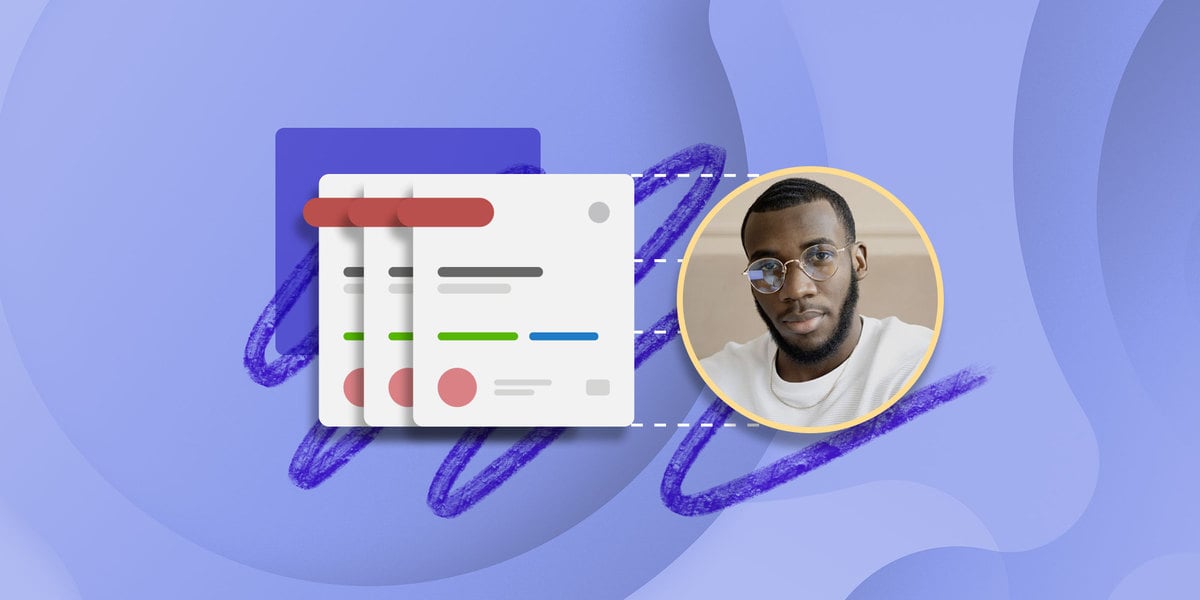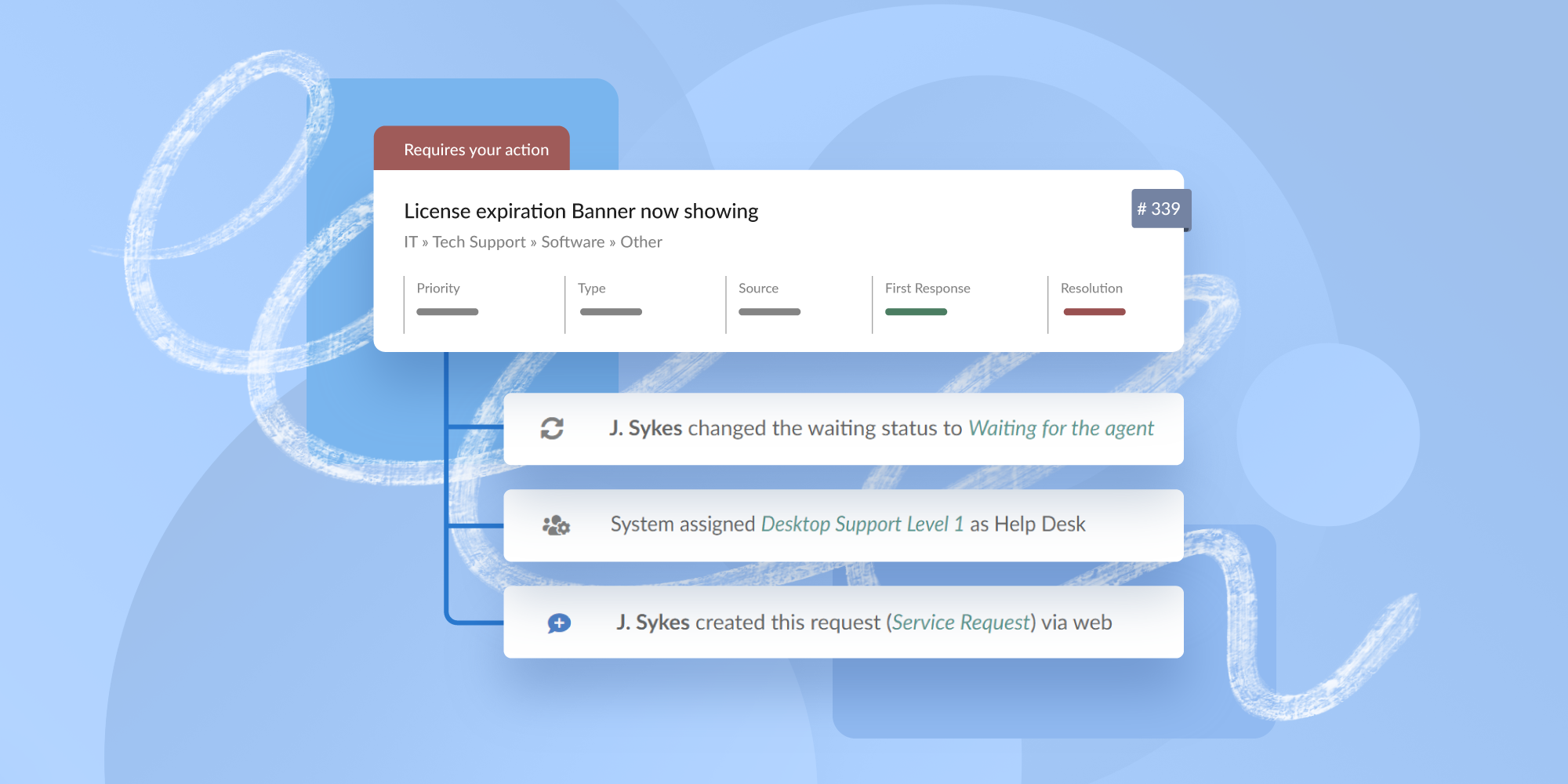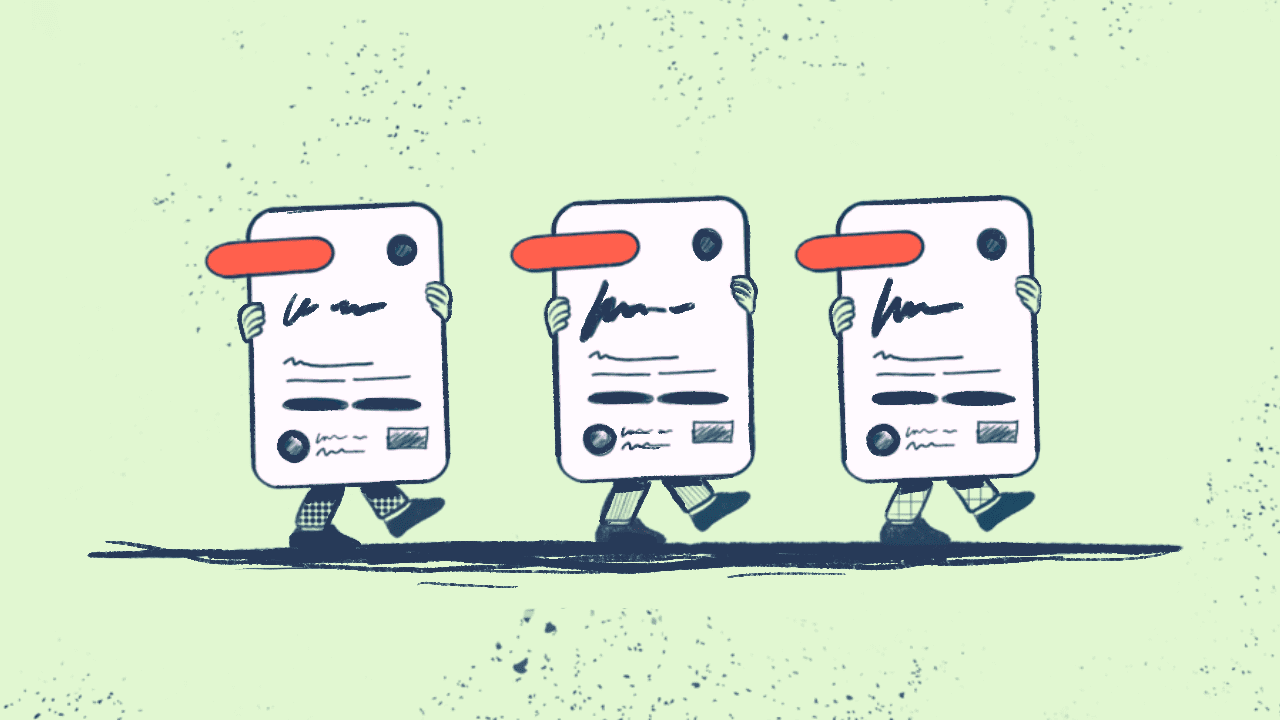I know it and you know it: Efficiency is key in the world of IT Service Management (ITSM). That’s where ticket templates come into play. By using a ticket template, you can streamline your workflow, save time, and ensure consistency across your team’s responses.Whether you’re handling IT issues, school events, or Project Management, templates provide a reliable structure to manage your tasks effectively because you can easily edit them to suit your specific needs, changing text, images, and other elements to create unique designs tailored to your preferences.
In this article, we’ll dive into the best practices for using ticket templates, explore 15 different types of templates, and provide practical examples to get you started.
Let’s transform your ticketing system into a powerhouse of efficiency and productivity!

What is a ticket template?

This is going to be short because I’m sure you already know what a ticket template is. So, in a nutshell, within ticketing systems, a these documents are a pre-defined form used to streamline the creation and management of support tickets.
These templates standardize the information that needs to be captured, ensuring that all necessary details are included from the start. By providing a consistent structure, ticket templates help teams handle requests more efficiently and effectively.
Creating a ticket template involves customizing it to meet specific needs, for instance, which can be particularly useful for various events.

Key components of a ticket template
The key components of a ticket template—subject, description, priority, and attachments—are essential for capturing all necessary details in a structured and consistent manner.
The subject provides a concise summary, making it easy to identify and categorize the ticket at a glance. The description offers a comprehensive explanation of the issue or request, ensuring that the support team has all the context they need to address it effectively.
Priority helps in classifying the urgency of the ticket, enabling teams to prioritize their workload and address critical issues promptly. Attachments allow users to include relevant files or screenshots, which can provide additional insights and expedite the resolution process.
Together, these components ensure that each ticket is well-documented, facilitating a smoother and more efficient support workflow. In summation:
-
Subject: A brief summary of the issue or request.
-
Description: Detailed information about the problem or request, including any relevant context.
-
Priority Level: Classification of the ticket's urgency (e.g., High, Medium, Low).
-
Attachments: Option to include files or screenshots to provide additional information.

Best practices for using ticket templates
Ticket templates are a fantastic resource to create tickets, but like any tool, their effectiveness depends on how well they are used. Here are some best practices to ensure you get the most out of your templates:
1) Customize to fit your needs
-
Adapt templates: Modify templates to suit the specific needs of your organization. These templates offer a foundational structure, but integrating bespoke elements through customization can further align them with your distinct organizational style. It's worth exploring how you can personalize your template by adding unique design aspects that reflect your brand identity, leveraging tools and resources to adapt layouts efficiently.
-
Personal touch: Add personal touches such as your company’s branding, tone, and style to make the templates more relatable and engaging for users. You can also customize templates for school events, ensuring they are visually appealing and provide essential details.
2) Keep templates updated
-
Regular reviews: Schedule regular reviews of your templates to ensure they are up-to-date with the latest processes and technologies.
-
Feedback loop: Encourage team members to provide feedback on template effectiveness and make adjustments as needed.
3) Make templates easily accessible
-
Centralized repository: Store templates in a centralized location where all team members can easily access them.
-
User-friendly interface: Use software with an intuitive interface that makes it simple to search, select, and apply templates.
4) Train your team
-
Training sessions: Conduct training sessions to familiarize your team with the available templates and how to use them effectively. Consider some training programs.
-
Guidelines: Provide clear guidelines on when and how to use each template.
15 ticket templates
In this section, we've compiled 15 essential ticket templates designed to cover a wide range of scenarios. Each template includes a clear structure, helping you capture all necessary details quickly and accurately.
By implementing these templates, you can streamline your processes, improve response times, deliver a higher level of service, and create tickets like a pro. Let's dive into these practical examples and see how they can transform your ticketing system.
1. Ticket acknowledgement template
When to use: Use this template to acknowledge receipt of a support request and provide the requester with a ticket ID for reference.
Subject: Ticket Acknowledgement - [Ticket ID]
Body:
Dear [User's Name],
Thank you for reaching out to our support team. We have received your request and assigned it a ticket ID: [Ticket ID].
Our team will review your request and get back to you shortly.
Best regards,
[Your Name]
[Your Position]
[Company Name]
2. Ticket acceptance template
When to use: Send this template to inform the requester that their service request has been approved and an agent will be in touch shortly.
Subject: Ticket Accepted - [Ticket ID]
Body:
Dear [User's Name],
We are pleased to inform you that your service request has been accepted. An agent will be in touch with you shortly to assist you further.
Thank you for your patience!
Best regards,
[Your Name]
[Your Position]
[Company Name]
3. Support ticket follow-up template
When to use: Use this template to update the requester about the agent assigned to their case and request additional information if needed.
Subject: Follow-Up on Your Ticket - [Ticket ID]
Body:
Hi [User's Name],
We wanted to follow up regarding your support ticket [Ticket ID]. An agent has been assigned to your case. If you have any additional information that could assist us, please reply to this email.
Thank you for your cooperation!
Best,
[Your Name]
[Your Position]
[Company Name]

4. Support ticket status update template
When to use: Send this template to notify the requester about the current status of their ticket and any delays in resolution.
Subject: Status Update on Your Ticket - [Ticket ID]
Body:
Hello [User's Name],
We are writing to provide you with an update on your support ticket [Ticket ID]. Currently, your request is being processed, and we expect to have more information for you by [Expected Time].
Thank you for your patience!
Sincerely,
[Your Name]
[Your Position]
[Company Name]
5. Ticket escalation notice template
When to use: Use this template to inform the requester that their issue is being escalated to a more experienced agent for further assistance.
Subject: Escalation of Your Ticket - [Ticket ID]
Body:
Dear [User's Name],
We wanted to let you know that your ticket [Ticket ID] has been escalated to a senior support agent for further assistance. We appreciate your understanding as we work to resolve your issue.
Best regards,
[Your Name]
[Your Position]
[Company Name]

6. Abandoned ticket template
When to use: Send this template to follow up with users who have not responded to see if they still need help with their original request.
Subject: Follow-Up on Your Ticket - [Ticket ID]
Body:
Hi [User's Name],
We noticed that we haven't received a response from you regarding your ticket [Ticket ID]. If you still need assistance, please reply to this email, and we will be happy to help.
Thank you!
[Your Name]
[Your Position]
[Company Name]

7. Ticket resolution template
When to use: Use this template to notify the requester that their issue has been resolved and the ticket is being closed.
Subject: Your Ticket Has Been Resolved - [Ticket ID]
Body:
Dear [User's Name],
We are pleased to inform you that your ticket [Ticket ID] has been resolved. If you have any further questions or concerns, please do not hesitate to reach out.
Thank you for your patience!
Best,
[Your Name]
[Your Position]
[Company Name]
8. IT service ticket form template
When to use: Provide this form for users to submit IT help requests, including urgency level and a description of the issue.
Subject: IT Service Request Form
Body:
Hello [User's Name],
To assist you better, please fill out the following IT service request form:
- Name:
- Email:
- Issue Description:
- Urgency Level (Low/Medium/High):
Once submitted, our team will review your request and get back to you shortly.
Thank you!
[Your Name]
[Your Position]
[Company Name]

9. Troubleshooting ticket template
When to use: Send this template to inform the requester that their issue is being troubleshot and provide an expected resolution time.
Subject: Troubleshooting Your Ticket - [Ticket ID]
Body:
Hi [User's Name],
We are currently troubleshooting your issue related to ticket [Ticket ID]. We aim to have a resolution for you by [Expected Time].
Thank you for your understanding!
Best regards,
[Your Name]
[Your Position]
[Company Name]
10. Out of office (OOO) message template
When to use: Use this template to notify users that support agents are out of the office and provide alternative resources for urgent issues.
Subject: Out of Office Notification
Body:
Dear [User's Name],
Thank you for your email. Our support team is currently out of the office and will return on [Return Date]. For urgent issues, please contact [Alternative Contact Information].
We appreciate your understanding!
Best,
[Your Name]
[Your Position]
[Company Name]
11. Turnaround time update template
When to use: Send this template to inform the requester of any changes to the expected resolution time for their ticket.
Subject: Update on Turnaround Time - [Ticket ID]
Body:
Hello [User's Name],
We wanted to update you on your ticket [Ticket ID]. Due to [Reason for Delay], the expected turnaround time has changed to [New Expected Time].
Thank you for your patience!
Best regards,
[Your Name]
[Your Position]
[Company Name]

12. Error apology template
When to use: Use this template to apologize for any errors that may have occurred and assure the requester that the issue is being addressed.
Subject: Apology for Error - [Ticket ID]
Body:
Dear [User's Name],
We sincerely apologize for the error that occurred regarding your ticket [Ticket ID]. Our team is actively working to resolve the issue.
Thank you for your understanding!
Best,
[Your Name]
[Your Position]
[Company Name]
13. Unexpected outages template
When to use: Send this template to notify stakeholders about unexpected system outages and provide updates on resolution efforts.
Subject: Notification of Unexpected Outages
Body:
Dear [User's Name],
We want to inform you about unexpected outages affecting our services. Our team is working diligently to resolve the issues and will provide updates as they become available.
Thank you for your patience!
Sincerely,
[Your Name]
[Your Position]
[Company Name]
14. Technical issues notification template
When to use: Use this template to inform users about ongoing technical issues and expected resolution times.
Subject: Technical Issues Notification
Body:
Hello [User's Name],
We are currently experiencing technical issues that may affect your service. Our team is actively working on a resolution and we will keep you updated.
Thank you for your understanding!
Best regards,
[Your Name]
[Your Position]
[Company Name]
15. Widespread updates announcement template
When to use: Send this template to communicate company-wide updates or changes that may affect users, including implementation timelines.
Subject: Important Company-Wide Update
Body:
Dear Team,
We would like to inform you about important updates that may affect your operations. Please find the details below:
- Update Description:
- Implementation Date:
- Impact on Services:
If you have any questions, please reach out.
Thank you!
[Your Name]
[Your Position]
[Company Name]
Feel free to copy and paste these templates into HubSpot or any other platform you are using!
Improve your ticket responses with AI
To complement ticket templates, Artificial Intelligence powered features within the ticketing system can help further streamline the quality and speed of your team´s performance.
InvGate Service Management's AI-Improved Responses feature reviews draft replies (or templates), considers all the details, then creates a new response. This can elaborate on or alter the tone of the original draft using generative AI.
Once again, the agent has to incorporate their final human customization before submitting the answer, but avoiding the time it takes to start each ticket from scratch.
Conclusion
Ticket templates are an invaluable resource for streamlining workflows, ensuring consistency, and saving time. By following best practices and using the diverse range of templates provided, you can significantly enhance the efficiency and effectiveness of your ticketing system.
To leverage the full potential of ticket templates, you need a tool that is up to the challenge. And you can rest assured that InvGate Service Management makes the cut. Ask for your 30 day trial and explore the ticketing system and all its full set of functions.
Start implementing these templates today and watch your team's productivity soar!
Frequently Asked Questions
1. What are ticket templates?
Ticket templates are pre-defined forms used to streamline the creation and management of support tickets. The process of creating a ticket template involves setting up a standardized form that captures all necessary information upfront, ensuring consistency and saving time.
2. How can I customize ticket templates?
You can customize ticket templates by modifying fields, adding your company's branding image, and adjusting the language to fit your organization's needs.
3. Where should I store my ticket templates?
Store your ticket templates in a centralized repository that is easily accessible to all team members. Use a user-friendly interface for easy searching and selection.
4. Why are ticket templates important?
Ticket templates are important because they streamline workflows, ensure consistency, and save time, leading to increased efficiency and productivity in managing support requests.















